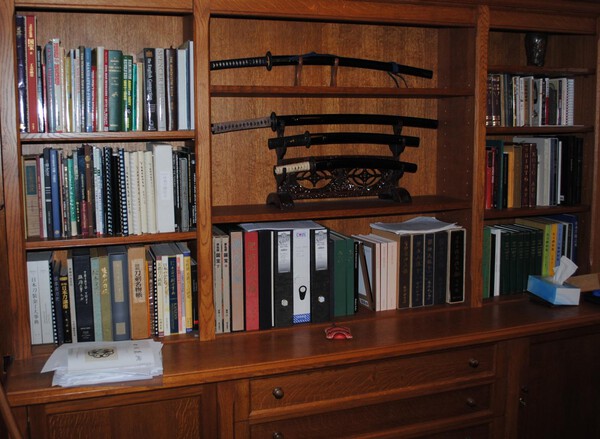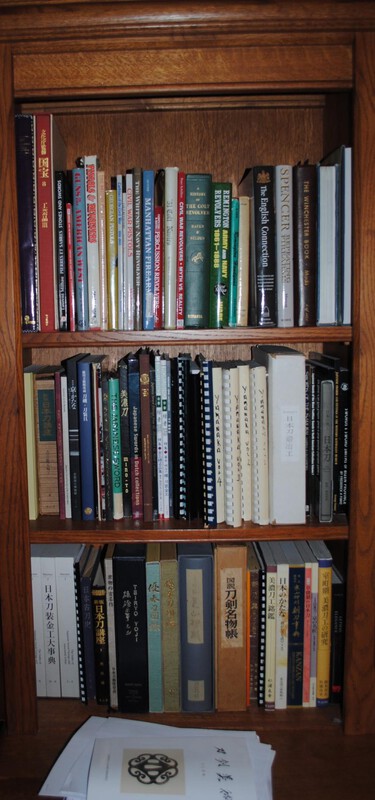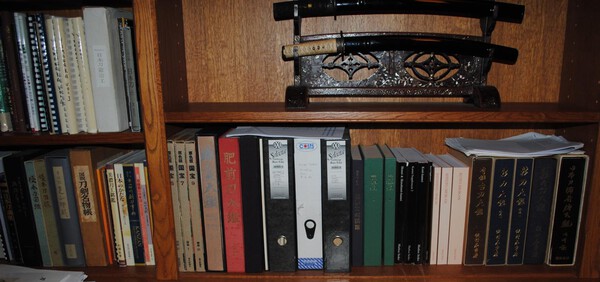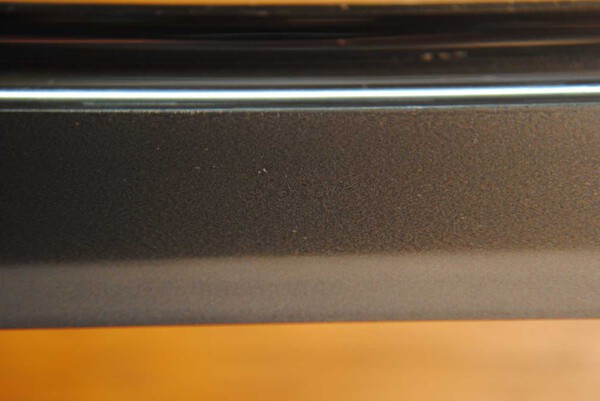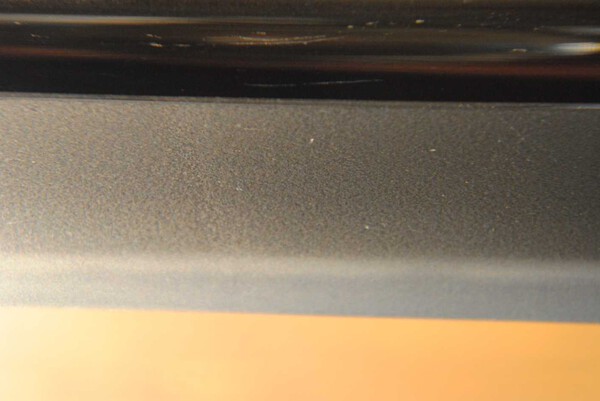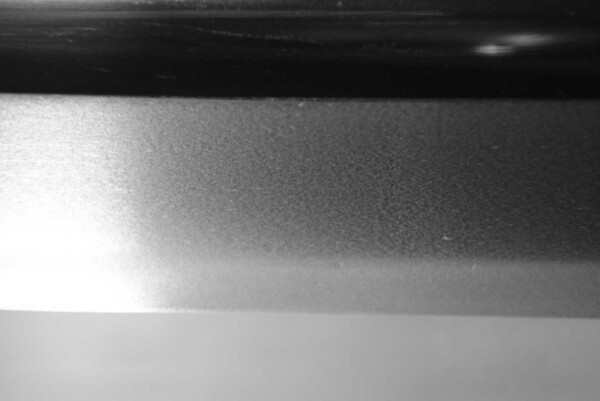-
Posts
3,046 -
Joined
-
Last visited
-
Days Won
73
Content Type
Profiles
Forums
Events
Store
Downloads
Gallery
Everything posted by paulb
-
Just thinking it through I don't think O-hada could be polished away. What would be more likely to happen is that as you polished the weld lines would open and become more visible until ultimately core steel showed through. I recently did a write up on a Kotetsu wannabe and one of the factors that confirmed to me it wasn't an authentic work was the lack of this feature. Every blade I have studied (admittedly on paper not in hand) has this as part of it's description. If it isn't there be doubtful.
-
I always understood that this was a larger itame hada than the rest of the blade and also a little rougher. However this opinion is based on what I have read or been told rather than seen
-
I never knew Keith but those I know who did spoke very highly of him. He will be another great loss to our small community. Rest in Peace and condolences to those who were close to him.
-
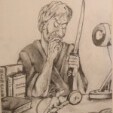
Favorite Era for Sword Making
paulb replied to Blazeaglory's topic in General Nihonto Related Discussion
Actually Dwain so are mine. Some of the finest swords I have ever held are o-suriage Kamakura period work and my own collection has only one signed koto blade the rest are all O-suriage. -
Hi Phil, Cant tell too much in it's current condition. What can be seen of the hamon suggets Mino influence and possibly late koto early shinto but that really is a guess. If possible I would try and put it in to the hands of a qualified polisher or experienced collector and see what they think
-
also think it is a genuine and abused showa blade with low quality repro fittings. I would doubt there is much that could be salvaged
-

Favorite Era for Sword Making
paulb replied to Blazeaglory's topic in General Nihonto Related Discussion
Having gone through various stages of "this is my favourite period" I came to the conclusion there are masterworks from all eras and I would rather have a masterpiece from the shin-shinto period than an also ran from earlier. Having said that the majority of swords I truly enjoy are from the Kamakura period, just running over in to the Nambokucho. During this period in a number of places everything just seemed to come together to produce work which, although varied between traditions, was as close to perfection as one is likely to see. -
Can I suggest you take a look at the for sale section here and links to other dealers listed on the site just to see what is available for the money you are thinking of spending. £5000 for an unpapered blade with an acid polish is a very high price IMHO edit: sorry others beat me too it but I think the consistent message is very clear
-

Show off your Nihonto book collection
paulb replied to bigjohnshea's topic in General Nihonto Related Discussion
Alex, Unfortunately not. I promsed myself I would take on the translation of the kantei blades illustrated when I retired. Now 3 years in and still havent started. They are a great resource that some day I will at least index but at the moment they are just taking up a lot of space (and they weigh a ton!) -

Show off your Nihonto book collection
paulb replied to bigjohnshea's topic in General Nihonto Related Discussion
Ok John, here you go. behind the doors of the cupboards at the bottom of the main unit are more than 350 copies of the NBTHK magazines in boxes. I think the earliest dates from 1965 The top shelf on the right hand column holds firearm reference books all the rest you see are Nihonto references. This is in one room all auction catalogues and less often used books are in another one (I think therapy might be in order!!)- 41 replies
-
- 12
-

-
Alex you would be surprised at how many examples there are of swords being attributed to shin-shinto by one body and koto by another. There were a number of shin-shinto smiths who specialised in producing copies, and yes outright fakes too, of much earlier work. Some of them were very very good. So I dont think it is a case of being thick just making the wrong call based on the short time they have to make a judgement.
-
Ed, I agree very much with your post except the NBTHK is not the only group to have been involved in scandal and fraud. Also the problem at the NBTHK was a long time ago and involved local offices issuing papers. My understanding is that since that occurred the system has changed to ensure such problems cannot, or at least should not happen again. At some point we have to stop quoting what happened 40 years ago under different people as a "problem" or gauge of an organisations trustworthiness. Are the judges at the NBTHK, NTHK, NTHK-NPO perfect? Absolutely not Are they better than me? Absolutely I agree that most complaint is generated by disappointment. I have yet to hear anyone complain they got a better than expected attribution. However I have seen some from all three organisations that I do not understand. This can and often does trigger further study in attempting to understand why they have reached the conclusion they have.
-
Hi Dean, Oil quenched swords are not considered traditionally made. Many different techniques and manufacturing methods were employed during the war ranging from fully traditionally made such as those made by the Yasukuni smiths to those that were produced from bar steel. Oil quenched blades often had a degree of hand finishing. There is a market for this type of sword and I will leave it to those with more specialist experience to give you an estimate. However it's appeal will be to the militaria collectors rather than those interested in traditionally made swords.
-
Hi Mason, No I think that is a reasonable assumption
-
I am at risk of proving myself to be extremely boring about this subject but descriptions of hada are not absolute. Even between such standard references as Nihonto koza and Nagayama there are differences. However Nashiji hada is used almost exclusively to describe the extremely tight ko-itame hada seen on blades of the Awataguchi school. The visual effect is created by the tight hada, a great deal of ko-nie and chickei combining to give the appearance described. What you are showing on the images is, as Brian says not nashiji hada, it appears to be the typical "grainless" (not to be confused with true muji hada) seen on non traditionally made blades of the showa period. With hada such as nashiji and chirimen seen in Aoe blades it is very difficult to describe and understand until you actually see examples in hand. I spent many years believing that a ko-Enju blade I had had something close to nashiji hada, then I studied an Awataguchi work and realised it was nowhere near.
-

Japan Art expo 2020
paulb replied to paulb's topic in Sword Shows, Events, Community News and Legislation Issues
Sorry Dirk I dont know maybe drop a mail to the organisers. -

Japan Art expo 2020
paulb replied to paulb's topic in Sword Shows, Events, Community News and Legislation Issues
Dear All, I wanted to update everyone regarding Japan Art expo. The educational programme has now been finalised. Details can be found on the Japan art expo website. The educational programme runs from Friday afternoon through Saturday and will include presentations on a diverse range of subjects and both armour and sword kantei sessions. many of the presentations will be given by contributors to the NMB. Alongside the presentations we intend to put together an exhibition of high quality items relating to the lectures. Details of this will be posted on the website as and when we finalise it. As has been said often before Samurai Art Expo was an extremely well run and enjoyable event. This year Japan Art Expo promises to be bigger and better. It offers collectors and enthusiasts in Europe a unique opportunity to come together and enjoy two and a half days of sword and armour relation conversation and study. details can be found on www.japanartexpo.com. -
Mason As to how they achieved it I think it has been a question largely unanswered over many hundreds of years. Many have tried to recreate it and some have come very close but not quite there. I think one of the key factors was the quality of steel they were using. These smiths were working for the nobility and Imperial court so only the very best steel would have been used. In many if not all cases they were using single piece construction, which I am told has its own challenges and requires considerable skill to work effectively. How they were able to so finely judge the point at which they should stop before losing hada altogether or burning off all the carbon the heavens only know but they did it time and time again and very consistently. It is sometimes hard to remember that all they had to use was a hammer, forge and anvil. I admit I am very biased and in my opinion there is no finer example of the swordsmiths skill than is seen in the jigane of an Awataguchi smiths sword. BTW for a long time I was working on the assumption that the hada was so called because it resembled the skin of a Japanese pear. Based on one of the standard references (I forget which) this is apparently incorrect it actually refers to the hada looking like the flesh of the pear not the skin. I guess it all depends where you put the emphasis in the "Ji" i.e. Nashiji hada or nashi-jihada
-
-
I think Jacques is absolutely right. Kantei should always start with sugata. The late Dr. Compton wrote extensively about this in an essay published in the 100 masterpieces book published by Sotherbeys. The shape can tell you a great deal and is generally (certainly not always) a more consistant element than either hamon or boshi.
-

Recent UK import hassles
paulb replied to Alex A's topic in Sword Shows, Events, Community News and Legislation Issues
Hi Alex The 50cm figure was used in the original definitions when they wanted to ban "Samurai Swords" so I am guessing it carried over from that. -
Yes Chris I see what you mean from the images. I saw it at a Thursday evening dinner meeting organised by Robert Hughes before the DTI and had the chance to spend a good amount of time looking at it in detail. It has everything you would expect to see from a top Rai smith of that period and more. The activity in both jigane and hamon is fantastic and the shape exquisite. It is certainly one I would like to add to my collection but the chances of that are much the same as me winning the lottery (which I don't do!)
-
I have lusted after the tanto on Fred's site ever since I saw it in Japan when he bought it. It is a beautiful piece which I think sums up the work of Kunimitsu.in a small piece of steel. Unfortunately I don't think I have been good enough this year for Santa to bring it for me!


